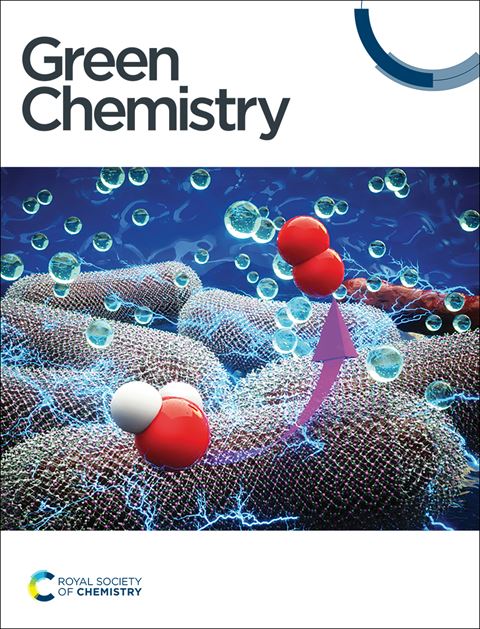Recent advances in heterogeneous catalysts for biocrude hydrodeoxygenation
IF 9.3
1区 化学
Q1 CHEMISTRY, MULTIDISCIPLINARY
引用次数: 0
Abstract
Hydrodeoxygenation (HDO) of biocrude into chemicals and transportation fuels represents a promising avenue for the sustainable utilization of biomass-derived biocrude oil, obtained through pyrolysis or liquefaction. Catalysts play a pivotal role in this process, providing active metal sites for hydrogenation and hydrogenolysis, alongside acid sites for ring-opening, cracking, and C–O bond cleavage. Despite its potential, previous studies have often reported low HDO rates, leading to rapid catalyst deactivation and the formation of undesirable byproducts. Thus, the careful selection of catalysts that achieve an optimal balance between metal and acid functionality is critical. This review systematically examines the properties of biocrude produced by various techniques and the catalysts used in HDO of biocrude and its model compounds. Particular attention is given to the roles of sulfided metals, noble metals, non-noble metals as catalysts as well as various supports in HDO reactions. The influence of catalyst characteristics, including metal particle size, acid type and strength, and support structure, on HDO activity and product distribution is thoroughly analyzed. Additionally, factors contributing to catalyst deactivation are discussed. Finally, the review addresses current technical challenges and offers future perspectives on the development of catalysts with improved HDO activity and stability.

将生物原油加氢脱氧(HDO)转化为化学品和运输燃料,是可持续利用通过热解或液化获得的生物质衍生生物原油的一条大有可为的途径。催化剂在这一过程中起着关键作用,可为氢化和氢解提供活性金属位点,同时还可为开环、裂解和 C-O 键裂解提供酸性位点。尽管催化剂具有很大的潜力,但以往的研究往往发现其 HDO 速率较低,导致催化剂迅速失活并形成不良副产物。因此,仔细选择能在金属和酸官能度之间达到最佳平衡的催化剂至关重要。本综述系统研究了通过各种技术生产的生物原油的特性,以及用于生物原油及其模型化合物加氢脱氧的催化剂。其中特别关注了硫化金属、贵金属、非贵金属催化剂以及各种支持物在 HDO 反应中的作用。深入分析了催化剂特性(包括金属颗粒大小、酸类型和强度以及支撑结构)对 HDO 活性和产物分布的影响。此外,还讨论了导致催化剂失活的因素。最后,本综述探讨了当前面临的技术挑战,并就开发具有更高 HDO 活性和稳定性的催化剂提出了未来展望。
本文章由计算机程序翻译,如有差异,请以英文原文为准。
求助全文
约1分钟内获得全文
求助全文
来源期刊

Green Chemistry
化学-化学综合
CiteScore
16.10
自引率
7.10%
发文量
677
审稿时长
1.4 months
期刊介绍:
Green Chemistry is a journal that provides a unique forum for the publication of innovative research on the development of alternative green and sustainable technologies. The scope of Green Chemistry is based on the definition proposed by Anastas and Warner (Green Chemistry: Theory and Practice, P T Anastas and J C Warner, Oxford University Press, Oxford, 1998), which defines green chemistry as the utilisation of a set of principles that reduces or eliminates the use or generation of hazardous substances in the design, manufacture and application of chemical products. Green Chemistry aims to reduce the environmental impact of the chemical enterprise by developing a technology base that is inherently non-toxic to living things and the environment. The journal welcomes submissions on all aspects of research relating to this endeavor and publishes original and significant cutting-edge research that is likely to be of wide general appeal. For a work to be published, it must present a significant advance in green chemistry, including a comparison with existing methods and a demonstration of advantages over those methods.
 求助内容:
求助内容: 应助结果提醒方式:
应助结果提醒方式:


